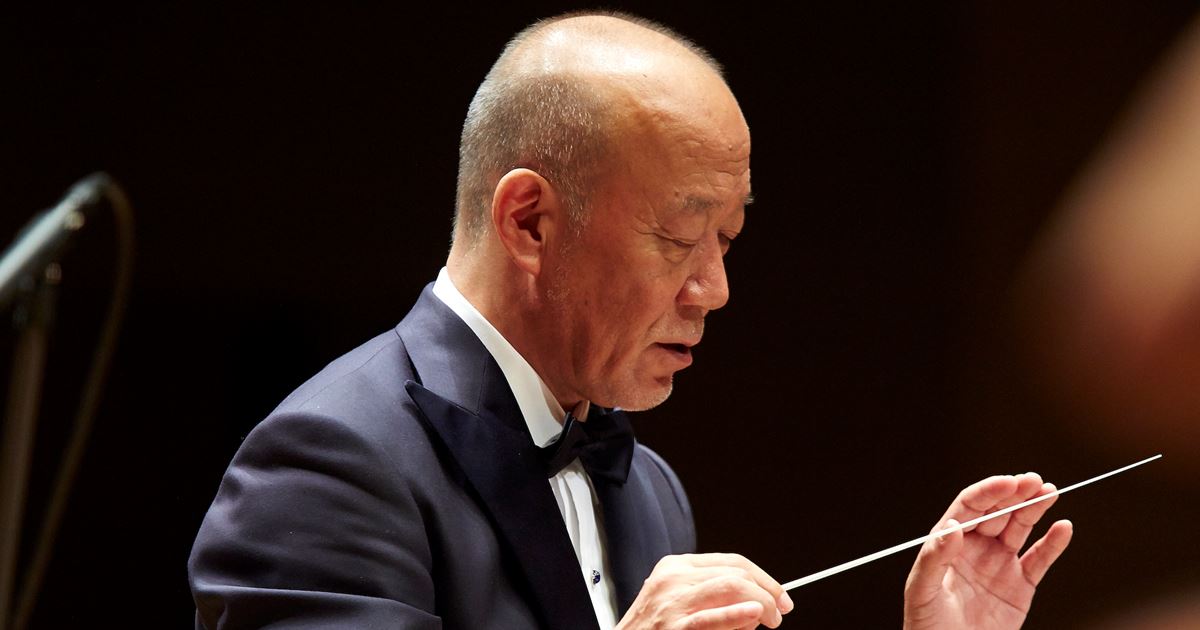Joe Hisaishi, a prominent Japanese composer and musical director, conducted three sold-out concerts with the Seattle Symphony at Benaroya Hall Jan. 12-14. His performance of “Princess Mononoke Symphonic Suite” — featuring a wide and intricate orchestral sound and a captivating atmosphere that complements the movie’s narrative — transported the large audiences to a mystical world.
Hisaishi, born Mamoru Fujisawa, gained worldwide recognition for his work on the original soundtracks for many Studio Ghibli films. Studio Ghibli is a celebrated Japanese animation studio established in 1985 by Isao Takahata and Hayao Miyazaki, both of whom are renowned animated film directors. The studio produced 22 feature-length films. Hisaishi started composing songs for Hayao Miyazaki from Studio Ghibli’s first film, “Nausicaä of the Valley of the Wind,” in 1984. Since then, Hisaishi has written scores for all but one of the Studio Ghibli Miyazaki films.
Hisaishi’s Seattle performances at Benaroya Hall drew fans across the country. Praise Wu flew from San Francisco just for the Hisaishi concert on Jan. 13. Wu said she grew up with Studio Ghibli Films and listened to Studio Ghibli soundtracks all the time when she was studying for board exams for Chinese acupuncture and health.
Kenneth McClure, who has been a Studio Ghibli fan since he was young, came to the concert with his parents who are subscribers to the Seattle Symphony. “My favorite is Princess Mononoke,” McClure said. Along with “Princess Mononoke Symphonic Suite,” Hisaishi performed “Merry-Go-Round of Life” from “Howl’s Moving Castle” and “One Summer Day” from “Spirited Away” as encores.
Thomas Widger, who is another fan of the composer, was excited by the performance. “Being able to see Joe Hisaishi’s performance live and listen to the Studio Ghibli soundtracks performed at a high level was a thrilling experience.” Widger said “Howl’s Moving Castle” is the first Studio Ghibli film that he’s ever seen and has been his favorite. “It was a very different animation style and very different directing artform. I have always been a fan of animated TV shows and movies, but the Ghibli Studio films have a special place in my heart.”
Studio Ghibli’s popularity soared after the release of their debut works “Nausicaä of the Valley of the Wind” in 1984 and “Castle in The Sky” in 1986. Since then, Studio Ghibli films have gained fans with their beautifully painted landscapes and distinctive storylines.
Despite their success in Japan, the studio initially encountered challenges in gaining global recognition. Michigan Daily noted that it wasn’t until 1996, upon securing a deal with the Walt Disney Company, that Studio Ghibli’s films found widespread popularity among American audiences. The U.S. release of “Princess Mononoke” a year after the Disney deal did not match its success in Japan.
The landscape shifted with the 2022 U.S. release of “Spirited Away,” which earned the Golden Bear Award at the Berlin International Film Festival and clinched an Oscar. This success reshaped American perceptions of animated films, transforming them from being perceived solely as children’s entertainment to being embraced by older audiences.
Critics praise Hisaishi’s music for its universal appeal, connecting with people of varied cultural backgrounds. James Williams of The New York Times, noted that Hisaishi skillfully preserves the integrity of Japanese culture while seamlessly integrating Western tonal systems.
Hisaishi, 73, launched his professional career as a music engraver and later became a composer in the mid-1970s. He began his journey in animation by creating scores for anime series such as “Hajime Ningen Gyatoruz” (Gyatoruzu: The First Human) in 1974 and “Robokko Beeton” (Robot Child Beeton) in 1976. The composer drew inspiration from jazz, the music of Japanese electro-pop pioneers the Yellow Magic Orchestra (which included composer Ryuichi Sakamoto), and American composer Steve Reich. These influences played a significant role in shaping his style in the early years of his career and beyond.
As a solo artist, Hisaishi released his first solo albums, “MKWAJU” in 1980 and “Information” in the following year. Since then, he has released nearly 40 solo albums. It was this solo work that producer Isao Takahata recommended Hisaishi to Hayao Miyazaki, an emerging director who was working on a new feature film, “Nausicaä of the Valley of the Wind” at that time.
“Most of the time, we work from a clean slate,” Hisaishi said, referring to Studio Ghibli film works with Hayao Miyazaki in a Symphonic Celebration interview. Miyazaki used to produce one film every four years. Hisaishi said he was always worn out when he finished one of his works, but there was no more work for at least another two years. Miyazaki usually called Hisaishi soon after he wrote out his storyboard, which prompted Hisaishi to prepare for his work for the next two years. Hisaishi said, “ when it comes to my film music, I feel like I’ve built my life upon Miyazaki’s creations.”
During the COVID pandemic, all the overseas concerts were postponed. “Thanks to that, I got a lot of free time and could write both Symphony No. 2 and No. 3 in two years,” Hisaishi said in a media interview. “When I wrote Symphony No.1, it took seven to eight years for me to complete it.”
At the “Joe Hisaishi Returns” concerts with Seattle Symphony, he performed “Symphony No.2” which emphasized unique approaches to form and structure that are drawn from minimalism, and “I Want to Talk to You” written by Hisaishi in 2021 as a stark warning that our communication is deteriorating at an alarming rate.
As Hisaishi wrote scores for the latest Ghibli Studio film by Hayao Miyazaki, “The Boy and the Heron,” he has been active as both a film music and classical music composer on the world stage.
Discover more from Post Alley
Subscribe to get the latest posts sent to your email.
